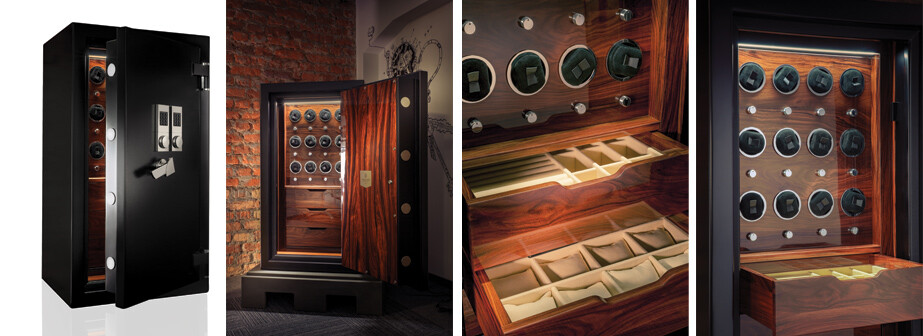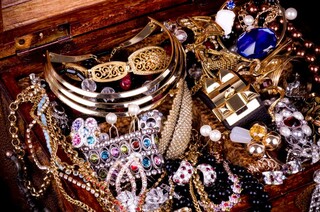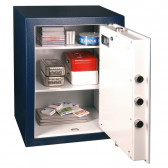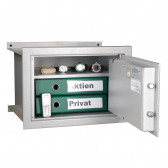Nowadays, everyone owns something that they regard as valuable. When we think "safe", it immediately brings to mind that it is a product for storing cash or jewellery. But not only that – in a safe you can safely store: documents, securities, bullion, collections of various kinds. The appropriate security and protection of these valuable items is a priority for many people. In order to protect valuable items above all from falling into the wrong hands, from theft, damage or loss, more and more people are investing in safes. However, we are not talking about simple metal cassettes, but safes with a certificate for storing valuables. Safes are an effective form of security, but they also offer something more – peace of mind in these increasingly uncertain times. In this article, we will outline the different types of safes and the key factors to look out for when choosing a safe to store valuables.
Variety of safes
There are different types and variants of safes available from the range of Hartmann Tresore – all to meet the different needs and expectations of users. A popular and perceived to be one of the most discreet is the wall safe (less often the floor safe), which can be permanently installed in the wall of a house or office. Because it is walled up and therefore concealed – it is not an obvious solution for a potential burglar.
Another group of safes are free-standing safes, which can be placed anywhere and moved around as needed. This is ideal for people who want the freedom to choose the location of the safe. This group also includes built-in safes, which are hidden in furniture, providing an extra layer of discretion and making them more difficult for possible intruders to detect quickly.
A certified safe for valuables – or what kind of safe?
One of the most important issues when it comes to safes is whether and what certificates they have – that is, proof that the safes have passed burglary or fire resistance tests.
A safe without certificates is nothing more than a metal 'tin' – it offers no guarantee that the items deposited in it will be at least marginally protected against attempted theft.
The EN 14450 standard establishes an inspection procedure for safes. In this standard we have 2 types of security classes: S1 and S2. The certificate for such safes is on the inside of the door and is in the form of a label. How are S1 and S2 safes made? Class S1 products have a single-wall body, double-walled doors and a locking mechanism. In S2 safes, both the door and the body are double-walled.
In accordance with EN 1143, safes in burglary protection class 0 and above are subjected to appropriate testing and inspection. The basis for this certification is a series of tests carried out by independent institutes (e.g. IMP, VdS, ECB), which involve attempting to break into the safe using various mechanical and thermal tools. Only those safes that pass these tests receive the relevant certification body's test plate (e.g. ECB certificate).
Safes from class 0 onwards have multi-walled doors, a multi-walled body and 4-way locking. The number, material and thickness of the walls and the infill between the walls determine the degree of burglary resistance of the safe.
Safes are certified not only for burglary resistance, but also for fire resistance. In fireproof safes, a special insulation significantly reduces the spread of high temperatures inside. As for the certificates, they can confirm fire resistance for 30, 60 or 120 minutes.
What does a safe's class mean?
When choosing a safe for storing valuables, there are a few key factors to consider. First of all, consider the value of the items you intend to store in the safe – this should directly determine the level of protection of the safe, in other words, its security class. Safes are classified based on their "ability" to resist burglary. What is the burglar's greatest enemy? Time! So the higher the security class of a safe, the more time it takes to get to its contents.
Type of locking used in safes
As far as the type of locking is concerned, safes in the lower security classes (S1 to class III) usually use a single lock, while class IV and above require a combination of two locks. As standard, each safe is fitted with a key lock (with two keys included).
The key lock may be replaced by another type of lock. This can be:
• an electronic lock,
• cipher lock,
• biometric lock,
Hartmann Tresore also offers an innovative lock – some safes can be opened from a smartphone using a special app.
You can find out about the different types of locks in these articles, among others:
Overview of popular locks in safes
Safe locks under a magnifying glass. Choose optimally
What do you gain when you buy a certified valuables safe from Hartmann Tresore?
Of course, you gain the best security for your valuables, but before the safe comes to you, an advisor will greet you at the beginning of your journey. We have the knowledge and experience and are able to respond to your needs. At Hartmann Tresore, advising customers is our 'conk'.
If, on the basis of our recommendation, you decide to purchase a particular model from our range, the delivery of the safe will take place in a discreet manner (after all, as few people as possible should know that we are supplying you with a safe).
Each safe has special mounting holes prepared. Many customers ask: "is mounting (i.e. anchoring) necessary?". We recommend it: by anchoring the safe to the floor or load-bearing wall, you need to use a lot more force to get the safe out first and then lift it.
We take care to contact you after delivery and eventual assembly – to make sure that everything is in order. We are pleased when a customer leaves a positive review on our company profile on Google.

Summary
Safes are an effective solution for storing valuables, providing physical protection and emotional peace of mind. Choosing the right safe depends on individual needs and preferences. Key factors such as the level of protection, capacity, lock quality and additional features should be considered during the selection process. Security should be a priority, so it's worth investing in a robust safe that meets all your requirements. Whether it is to protect money, documents or family heirlooms, a safe is an indispensable tool for securing valuables.
Burglary is a random situation that can affect any of us. It is worth protecting your valuables adequately (and in advance) – by investing in a safe that is appropriate to your needs.





